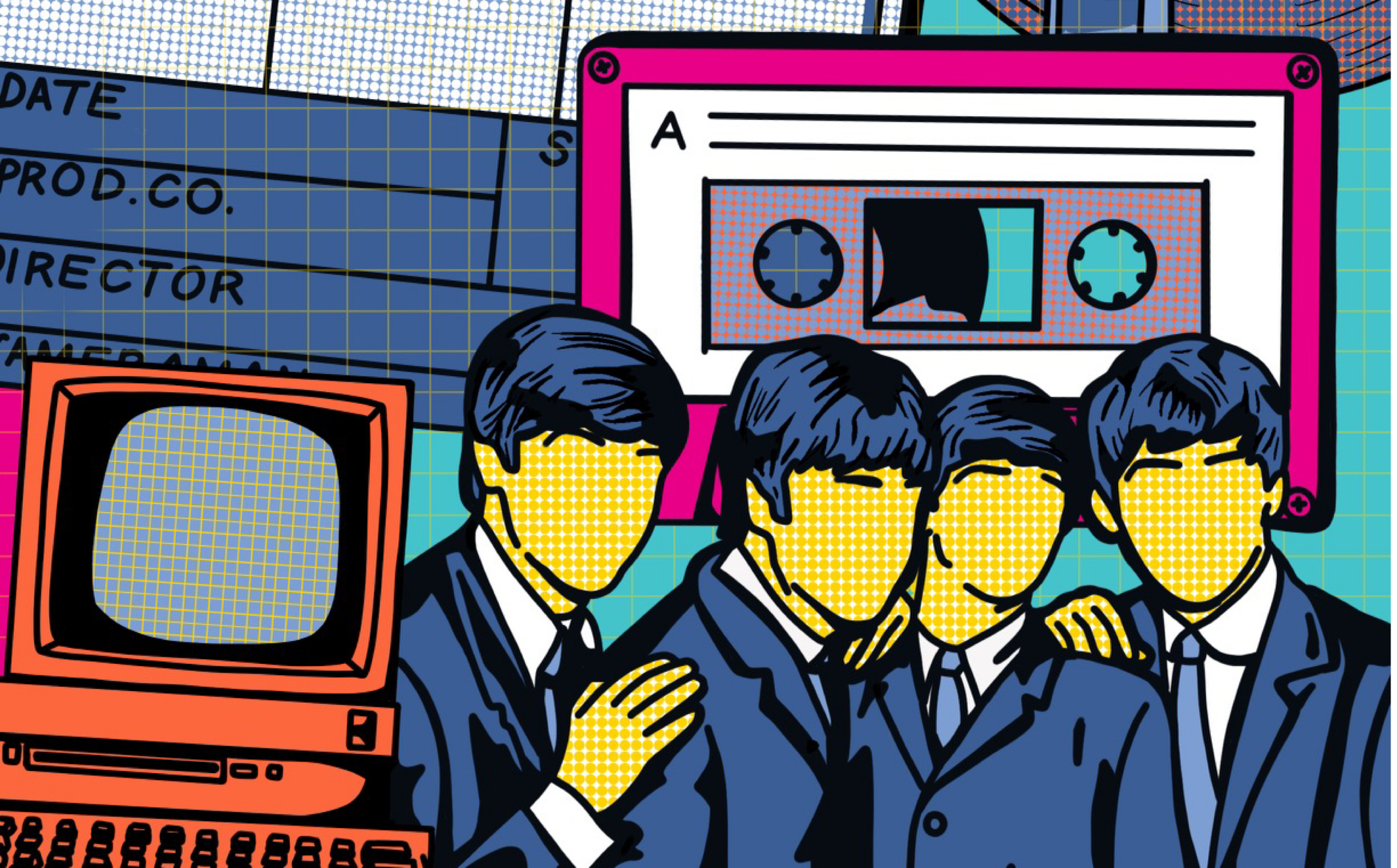Pop Culture is Dead—But It’s Probably for the Best
No modern band receives more undivided praise than The Beatles did in the 1960s. No fashion trend decorates the current cultural landscape like hairspray and high-waisted jeans did in the 1980s. No music genre dominates popular interest like rock ‘n’ roll did in the 1970s. In fact, even trying to define a genre now is a chore that generally provokes more arguments than agreements. Today, trends disappear from popular discourse as quickly as they arrive, often leaving no lasting cultural impact beyond mere entertainment. Pop culture is in a crisis, but should we mourn its dissolution or celebrate it?
As Marcel Danesi, a professor of semiotics at the University of Toronto, explains in his book, Popular Culture: Introductory Perspectives: “Whereas once a single style or genre dominated, today, everything from rock and jazz to classical and gospel have their own niche audiences, each with [their] own recording artists, radio stations, websites, [and] accompanying fan blogs.” The same is true for almost every creative discipline. The internet diversified popular media. But is this a modern phenomenon or did the internet just help to pronounce and legitimize existing diversities in individual interests?
We remember the culture of the 1960s as radically bohemian and drug-inspired, but yet this cultural movement to “turn on, tune in, and drop out,” was predominantly representative of educated, middle-class youth in the Western world. It’s important to realize that although it would have made for engaging history classes, senior citizens weren’t abandoning nursing homes in the 1960s and retreating to communes in Southern California, just as middle-aged men in rural Texas weren’t growing their hair out and practicing mindfulness. In other words, pop culture demands a certain generalization. Particular trends define a particular era by outweighing other less-popular ones. As a result, we marginalize certain communities and trends when we define pop culture.
But in the 21st century, the internet makes generalizing about cultural trends more complicated. Social media maintains niche fanbases that would otherwise be disconnected or overlooked. For example, in the 1970s, a dedicated fan of Captain Beefheart—an avant-garde musician and long-time friend of Frank Zappa—would have had to hang out in underground record stores or dingy concert venues in hopes of meeting someone with even a slight interest in his obscure artistry. Now they can visit www.beefheart.com and instantly connect with thousands of fellow fans. This capacity of the internet legitimizes the popularity of hundreds of overlooked artists and audiences and continues to testify for the breadth of cultural interest.
Likewise, changes in how we discover content diversified individual interests. For a long time, popular magazines, radio stations, or television shows informed people about new music, movies, or fashion trends. In this sense, media standardized content discovery; people received a lot of the same information and encountered similar trends and ideologies. This isn’t the case anymore. People don’t listen to the radio to check in with the music industry or discover a new artist; they listen to the radio when they’re stuck in an Uber, or their aux cord isn’t working. Now, companies like Spotify and Netflix individualize content discovery based on a user’s unique preferences—they recommend particular artists or movies based on your digital footprint.
This intent of digital media, while slightly invasive, is of incredible value to the individual. People whose tastes don’t conform to the masses now have the freedom to explore themselves and connect with others who share their passions. If you have a credit card and some free time (or even just a willingness to venture into the seedier parts of the internet) you can watch any movie, listen to any song, or read any book, and do so without ever having to change your posture. We have the luxury of choosing what we attend to, but in consequence, the spectrum of individual interest broadens. If you want to see this reality for yourself, ask strangers what kind of music they listen to and count how many people respond with, “a little bit of everything.”
Compounded on this diversity is the advent of digital streaming and home-recording technology, which dramatically increased the amount of available content. According to Rachel Newman, the global head of editorial at Apple Music, in the 1960s, 5,000 new albums were released each year. If we leaned towards a generous estimate and assumed each album had 15 songs on it, that would mean around 75,000 songs were released in a year. Admittedly, that’s a lot. If you wanted to cover them all, you’d have to be listening to 200 songs a day. That’s 10 hours. But at an industry conference in September 2022, the CEOs for the Warner Music Group and the Universal Music Group confirmed that over 100,000 songs are uploaded to various digital streaming platforms every day. If you started listening the second you were born and took enough stimulants to give an elephant a seizure, you’d need 205 years to sample all the songs that were released in 2022.
So, to recap, digital media has diversified cultural interest by individualizing content discovery and supporting niche fan bases. Simultaneously, with the advent of on-demand streaming and home-recording, the entertainment industry has become so overwhelmingly productive that trying to sort through it feels like a small battalion of 12-year-olds is throwing tabloids and vinyl records at your face as you try to browse a labyrinth of unlabeled shelves and disorganized CDs. In consequence, it’s almost impossible to get people to look at the same thing. When digital media freed creativity from the dimly-lit, windowless basement of corporate America and invited every artist with an idea and a smartphone to publish their work, the notion of collective identity—one reliant on fixed ideologies and cultural trends—disappeared.
Perhaps the only creative industry to resist this broader trend away from monoculture is Hollywood. Amidst the digital revolution, which propelled the music industry towards strange and interesting genres, Hollywood decided that the most profitable line of course was to squeeze every penny from existing cinematic franchises. By analyzing box office scores, consumer reports, and hundreds of other data sets, the entertainment industry discovered that audiences react predictably to familiar content. So, when Universal Studios is holding a $90 million cheque and deciding whether to invest it into a period piece starring an unknown actor or an 18th Despicable Me movie, they will pick the one with an existing fan base and a predictable box office return. This is why in the last eight years, the highest charting films have almost all extended existing franchises: the top 10 highest grossing films of 2022 included four Marvel films, four blockbuster sequels, and a 14th Batman movie. Likewise, in 2014, the top 10 highest grossing films included four Marvel movies, four blockbuster sequels, and a Disney spinoff.
This is why much of what is “popular” in the 21st century, particularly in the film industry, feels distinctly un-cultural. Blockbusters are often devoid of any honest ideological convictions, instead settling for socially soluble themes and conservative characters which can peacefully exist in the lucrative middle ground of cultural interest. As analytics regulate popular media, production studios pour out generic, homogenous, profit-hungry products that lack any specific representation. With so much diversity in creative content, what appeals to the lowest common denominator becomes most popular. Hollywood’s desire to appeal to the largest audience and protect their investments regulates the industry into a predictably boring state of complacency.
This is the perfect example of why we should celebrate the passing of pop culture. Before the internet disturbed the corporate colonization of popular media, every creative industry surrendered to executive authority. As Danesi explains, “The birth of pop culture in the 1920s was made possible by a partnership that it contracted with the mass media and the business world.” Exposure on television or radio determined popularity, but those platforms were protected by industry executives. The internet changed this. Now, anyone with an internet connection and a willingness to confront culture’s worst critics can release their creative projects, and with the advent of digital platforms like TikTok, YouTube, and Spotify, have a chance at finding popularity. So, if the consequence of equality is diversity, I hope we never go back.
Copy Editor (Volume 49) | aidan@themedium.ca —Aidan is completing a major in Professional Writing and Communications at the University of Toronto Mississauga. He previously worked as the Associate Editor for the Arts and Entertainment section of The Medium, and currently works as the Copy Editor for The Medium. When he’s not catching up on course work or thumbing through style guides, Aidan spends his free time exercising (begrudgingly), singing (unmelodically), and trying (helplessly) to read David Foster Wallace’s Infinite Jest. The latter of which has taken 3 years to reach the 16th page. You can connect with Aidan at aidan@themedium.ca.



This argument is flawed because it is based on a narrow definition of pop culture.
It assumes that pop culture is only defined by mainstream media and mass consumption, ignoring the diversity and creativity of online communities, indie media and micro-celebrities. Pop culture is not dead, but evolving and splintering into different forms and platforms.
The article relies on nostalgia and elitism to dismiss contemporary pop culture as inferior and meaningless, comparing the past with the present without acknowledging the historical and social contexts that shaped them. It also ignores the positive aspects of pop culture, such as its ability to entertain, educate and challenge us.
Funnily enough the article goes on to contradict itself by using examples of pop culture phenomena to support its claim that pop culture is dead. For instance, it mentions Game of Thrones, Marvel movies and Taylor Swift as examples of bad content, but these are also examples of pop culture that have huge fan bases and cultural impacts. Pop culture is not dead, but alive and diverse.
Most culture is and always has been trash, just like most people are stupid and most governments are tyrannical. Normies are trash people.